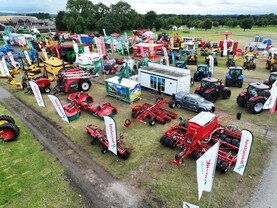There are almost twice as many private cars in Ireland as there were 20 years ago and the numbers are rising rapidly again after the post-2008 economic collapse. A disproportionate number are in rural Ireland.
The lowest rates of household car ownership in Ireland are in the Dublin City Council area, essentially Dublin without the outlying suburbs. One-third of households do not have a car, even though most parts of the city are more prosperous than the national average.
The highest ownership rates are in rural areas, including the smaller towns and villages. Fewer than 10% of these households have no car and about half have two cars or more. These patterns reflect transport reality – there is limited public transport serving even the medium-sized towns and there is little that can realistically be done to provide regular scheduled buses in the rural areas. There are few potential customers anyway and almost all of them have access to their own transport.
In some of Dublin’s inner suburbs there are peak bus frequencies as often as one every couple of minutes. It is perfectly feasible to live and work without a car and bicycles are making a comeback among the younger workforce. The same pattern is visible in the central areas of Cork city.
The Government has just announced a pilot scheme to improve bus services in rural areas. This will be welcomed by those without car availability but this limited scheme will hardly arrest the most visible manifestation of decline in the villages and smaller towns.
Retail outlets are closing and online competition is accelerating the trend in cities as well as smaller towns. The total number of retail outlets in the suburbs of Dublin is falling too – don’t be misled by the crowds on Grafton Street or in the out-of-town shopping centres.
The combined effect of the internet and near-universal car ownership has relegated the smaller towns down the retail hierarchy. If you live in a town or village with a population of 1,000 or even 2,000 it is unlikely that you have a local Tesco, Supervalu, Lidl, or a bank branch. But you may live within 15 or 20 minutes of a larger town which has all of these and you, or a family member, has a car too. The withdrawal of retail capacity from the smaller centres has been evident since the 1960s, driven by personal mobility and predating the internet, which has merely intensified a process long under way. These villages are effectively residential areas, many of them very attractive ones, populated increasingly by people who neither shop nor work locally. There will be no renaissance of retailing and inward investment has shown a clear preference for the cities with their larger labour pools.
The most treatable weakness in the smaller centres is the condition of the older residential housing stock. Many have a principal street with boarded-up retail premises but so have the secondary areas in the cities. The real difference is the prevalence of obsolescent housing, vacant but too costly to refurbish, in so many smaller towns. Obsolescent housing in Dublin gets occupied or recycled into new uses, planners permitting. In the small towns and villages, superior modern housing on the outskirts is available at affordable cost and the older stock decays.
The Government’s recent Project Ireland 2040 states that: “A new Rural Regeneration and Development Fund of €1bn will be established to invest in rural renewal to allow towns, villages and outlying rural areas to grow sustainably.”
Quite how outlying areas are to grow, sustainably or otherwise, is not explained – does it mean rural sprawl? This 20-year commitment could degenerate into a thin spread of political fairy dust sprinkled across every constituency – remember the decentralisation wheeze during the bubble? The current Town and Village Renewal Scheme, the model for the 20-year commitment of €1bn, has seen €30m allocated to 450 projects these last two years at an average spend of €67,000. This is barely enough to refurbish a single semi-derelict house. An alternative is to concentrate the effort on regeneration (compulsory purchase, knock the dereliction and a full re-build) in just a handful of the most promising locations. But then too many would be denied their sprinkling of fairy dust.






 This is a subscriber-only article
This is a subscriber-only article









SHARING OPTIONS: